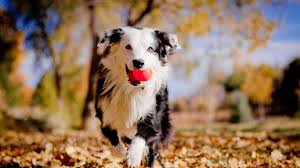Dogs and Raw Food Diets
I have read many things on the Internet suggesting that I should feed my dog raw food. I know my dog’s wild cousins hunt their food, so they eat their food raw. Is it OK for me to feed my dog raw food? Is that better than feeding prepared dry or canned food?

The Centers for Disease Control and Prevention (CDC), the Center for Veterinary Medicine (CVM), and the US Food and Drug Administration (FDA) stand united in their position (based on very robust data) that feeding raw food to dogs is potentially dangerous to both the dog and to you. The most recent study, conducted from 2011 through 2012, screened commercially available raw dog foods for bacteria that can cause illness. The raw dog food products were made from ground meat or sausage and frozen in tube-like packages. Nearly 25% of the raw food samples tested positive for harmful bacteria, includingSalmonella ssp. and Listeria monocytogenes. These bacteria can pose a health risk for the dogs who eat the raw food, as well as for the dog owners who handle the food while preparing it.
What kind of illness does Salmonella cause?
The CDC estimates that 1.2 million or more cases of food-borne salmonellosis occur in humans in the US annually. Approximately 400 people die each year from the disease. There is some uncertainty as to the total number of cases because milder cases may not be diagnosed.
Symptoms of salmonellosis in humans generally start 12 to 72 hours after exposure and include:
- Fever
- Diarrhea (often bloody)
- Nausea
- Vomiting
- Stomach pain
Children, the elderly, pregnant women, and immunocompromised individuals (patients on chemotherapy, with HIV, etc.) are at greater risk for more severe symptoms. Dogs can actually carry Salmonella in their intestines without showing signs of illness, thus serving as a reservoir for ongoing exposure to the humans in the household. In dogs, the symptoms of salmonellosis include:
- Vomiting
- Diarrhea (often bloody)
- Fever
- Inappetance (not eating, or not eating enough)
- Lethargy
What about illness from Listeria food contamination?
Listeriosis is a less well known food-borne illness than salmonellosis. Listeria monocytogenes is actually a leading cause of hospitalization and death from food contamination. While it is rarer than salmonellosis, over 90% of people with listeriosis end up in the hospital. In the US annually, the CDC estimates about 1,600 cases with about 260 deaths. In the European Union, the numbers are similar. One of the problems withListeria is that the bacterium is quite hardy, surviving in salty, acidic, and cold environments.
Listeriosis particularly targets newborns, the elderly, pregnant women, and those with compromised immune systems. The L. monocytogenes bacterium can invade many tissues including the brain, the tissues surrounding the brain and spinal cord, the gastrointestinal tract, and the bloodstream. Symptoms depend on which tissues are affected. The time between exposure and illness is about 3 weeks, making it difficult to pinpoint the precise exposure event. Pregnant women may only experience non-specific flu-like symptoms, but their babies may be born prematurely or even stillborn. Newborns fare the worst with listeriosis as up to one-third will die despite aggressive treatment.
Dogs can carry L monocytogenes without showing any signs, making them a potentially dangerous reservoir.
Is there any way to protect myself and my family should I occasionally choose to offer raw food to my dog?
The best protection against salmonellosis and listeriosis is to avoid the bugs altogether by not feeding raw food to your dog. Be aware that by feeding raw dog food you can infect yourself and the other people in the household. That said, here are some ways in which you can protect yourself if you handle raw dog food:
- Thoroughly wash your hands with soap and water after handling raw dog food.
- Clean and disinfect all surfaces and objects that come into contact with the raw food. For details about disinfection please see cdc.gov/flu/school/cleaning.htm.
- Keep raw food frozen until you are ready to use it, and then thaw it in the refrigerator or microwave (not in the sink or on the counter).
- Keep raw food separate from other food.
- Cover and refrigerate what your dog does not eat, or discard the leftovers safely.
- Do not kiss your dog on the face or allow him to lick your face, particularly right after he has eaten raw food.
- Wash your hands after petting or being licked by your dog.
Feeding a raw diet to your dog is a questionably sound idea from a nutritional perspective as well due to the difficulty in balancing the ration among macro- and micro-nutrients. Adding to that the fact that nearly a quarter of the commercially available raw dog food diets that were tested by the US FDA were contaminated by Salmonella or Listeria (or both), it is reasonable to conclude that a commercially prepared, conventional, complete and life-stage balanced dog food is a better choice. We can help you to choose the nutrient profile that best fits your dog.
